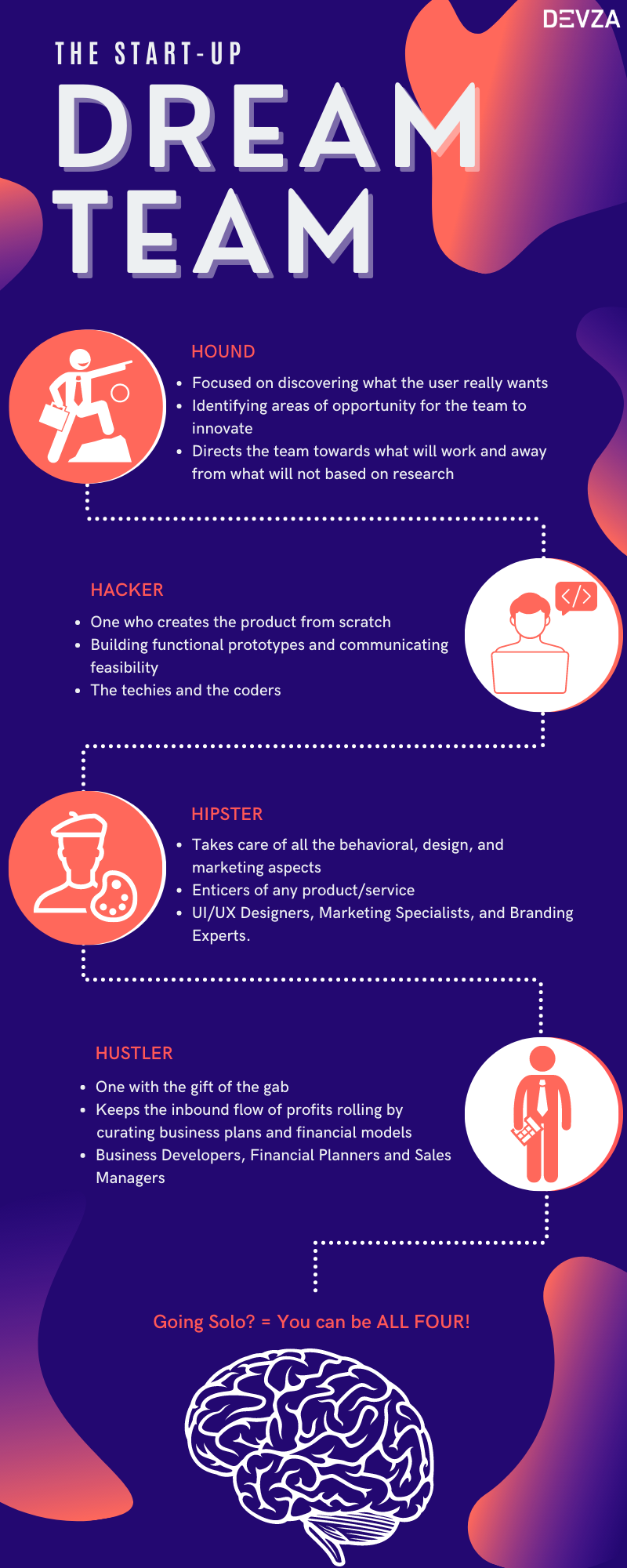Every disruptive innovation out there in the world started from one small startup idea.
A simple question that sparked a wave of brainstorming, bottomless coffee mugs, and endless hours of coding.
All of that leading towards a solution that changed the way we live.
Think of how 10 years ago, “let’s call an Uber” was a phrase that never existed. Saying “just Swiggy it” would have your friends looking at you strangely.
Clearly, convenience is at the crux of every human problem.
When a passionate founder like you sees a problem, the itch to produce an unbeatable and highly reliable solution quickly becomes an incessant need. With a plethora of online and offline marketing strategies, making your solution accessible to the whole world in a few seconds seems like an easily achievable feat.
One Small Step Towards your Startup Idea Evaluation, a Giant Leap Towards Success
You have a game-changing product in your hand ready to be launched. Your sales pitch is flawless. You have a multi-talented team.
OR
You may be engineering the whole thing yourself!
You have everything you need to shoot the product to the solution- hungry masses.
Yet, sometimes the most brilliant ideas with all the right resources still fail to be readily accepted into the market.
Evidently, a number of startup ideas fail to reach the break even point simply because of insufficient research done on their own product and how lucrative their business actually is.
Therefore, here are a few simple ways to evaluate your startup idea.
Let’s employ an analogy to help you navigate.
You are planning to develop a fitness app. It is designed to have customizable features such as selecting trainers, deciding a schedule, choosing a nutritionist approved diet, etc. Your app provides key metrics and performance indicators, and uses ML to recommend exercise regimens as your users progress.
1. Examine the Problem
Understanding exactly what your product is solving, is key in building a solid pitch. If the problem seems too vague, dissect it and understand the underlying aspects as to why this issue exists in the first place.
Taking our example, consider WHY there is a need to have a virtual fitness app.
Is convenience making people choose homes over gyms for their workouts? Has the COVID 19 lockdown forced this shift? Would this shift reverse once the lockdown is over?
Dissecting your problem gives you a variety of ways to look at your product from several angles. This can aid in more informed development, and possibly a totally new startup idea as well!
2. Sift through your Resources
Once you understand the problem, you need to look at your existing resources. Identify skills within you or your teammates (if applicable) to see what exactly each of you are bringing to the table. The most basic checklist of any business are the 4 Hs:-
The Hound, The Hacker, The Hipster, and The Hustler
The Hound – Represents the visionary, the expert whose ideas on what the market wants, is based on tactical research. The hound acts as the opportunity setter. They bring to light the need for a product/service that can bridge the gap between what the public wants and what’s missing in the current market. The hound can come from any professional background, as long as they are the ones responsible for the ideation of the product.
The Hacker – Represents the backbone of any product/service, the one who creates it from scratch. They are the innovation engines. The hacker has the ability to bring a creative vision to life by building functional prototypes and communicating feasibility. These guys are the techies and the coders (think of Front and Back End Engineers and Developers).
The Hipster – Represents the enticers of any product/service If you want your product to speak to the masses, grab their attention, make them convert into long-time users, you need a Hipster in your team. They take care of all the behavioral, design, and marketing aspects of your product to enable a solid user experience. They bridge the gap between insights and a working solution. These people are UI/UX Designers, Marketing Specialists, and Branding Experts.
The Hustler – Represent the mouthpiece of your product/service. The one with the gift of the gab. They are the ones differentiating a business model from a part time hobby to a full time profit making machine! They have a never ending thirst for getting paying users and keep the inbound flow rolling by curating business plans and financial models. These guys are the Business Developers, Financial Planners and Sales Managers.

Obviously, we aren’t advising you to seek out 4 different people to fill these roles!
Sometimes, all of these archetypes may be within you. However, knowing that your base resources are covered gives you enough leverage to start working on your product.
3. MVP is your MVP
Just like how you wouldn’t buy a used car without test-driving, a basic version of your product needs to pass the market test to actually determine whether it’s solving the core problem or not. This is where you must begin with an MVP, or Minimum Viable Product. MVP helps make your startup idea a reality. This is essential to see if the main functionality of your product is actually serving your users to quench their most essential requirements.
Based on your MVP’s performance, you can decide whether to ditch or pitch the startup idea. Whatever extra features and cosmetic changes you may want your product to have can be developed post success of your MVP.
In our example, although you may be tempted to release a version of your app with all the metrics and ML based recommendations, it’s best to see whether the basic function ,i.e., using the app to recruit professional trainers, is met. With a working MVP that hints towards success, you can be confident that your product would be in demand and make profit. An MVP would save you time, money, energy, and a lot of coffee cups.
4. Travel back in Time
If you have experience starting or running a business, scrutinize it to understand the right and wrong steps you took.
What exactly stopped your previous venture from breaking the glass ceiling? How did your previous business gain users?
Understanding your past endeavors helps you be more cautious. It also gives you the motivation to ask subject matter experts for their advice and opinion.
5. Roleplay
No matter how trivial this may sound, act like you are an investor interested in your own product. Oftentimes, a product may seem lucrative to you, but may seem incomplete to your potential customers.
This is where you must become your own critic. Instead of looking at how your product might be successful, look at how it can FAIL.
Yes you read that right.
Finding reasons for failure can not only force you to find solutions to overcome any future obstacles, but also helps you create a USP.
In our example, recruiting professional trainers seems like an easy task. Because of Covid 19 regulations and cost cutting, many are unemployed. However, keep in mind that a lot of these trainers have carved a niche in this industry for themselves and have turned to individual branding, simply because they are experts. So ask yourself what the most attractive feature about your product is, that would make these trainers join you instead of starting the exact business by themselves.
6. Identifying your USP
This is where you turn to your competitors for help, silently. There is a possibility that an idea similar to yours already exists and may even be thriving. If your competitor is already so popular, what feature of your product is going to make you a cut above the rest? What are your competitors missing out on and how important is this addition to your users?
In our example, recruiting professional trainers for virtual workout sessions is a business model that already exists. And due to COVID-19, entrepreneurs have basically juiced out every ounce of opportunity from making this business a necessity rather than luxury.
Naturally, there are hundreds of apps out there providing the EXACT service. So what is your product’s cutting edge? Is it the ML based recommendation? If so, who are the other startups in the same tech space? And why are they succeeding (or failing) at amassing users.
Researching existing competitions and staying up to date about new startups helps you bring clear cut unique selling points (USP) to the table.
7. Hedging against Copycats
“Imitation is the sincerest form of flattery”.
But not in this case.
Think about situations where your competitors can easily imbibe USPs of your product into theirs. If at all this imitation is possible, what other ways can your brand stand out.
Do you have a personal story to tell?
Loyal customers tend to stick to a particular brand simply because their ideologies identify with that of the business. Identify what’s unique about the journey of your startup, what propelled you, the setbacks you faced; literally carve a fairytale out of your business idea.
Your potential customers are smart. If your competitor is blatantly copying you, your customers would consider a lot of factors before they make the switch. In this case, think about whether you are open to quality feedback. Do you have the resources to handle incoming customer support queries?
It could be simple attention to detail, a heart-touching story, or even solid customer support experience that could land you a loyal user base.
Finally, if you are thinking of utilizing financial leverage from outside, add this exercise too into the mix.
8. The Investor POV
If you were ever interested in applying psychology to your business, this is the best chance. Believe it or not, investors themselves vary in terms of what peaks their interest, what their ultimate goal from investment is, how they approach your business, and even how they criticize you.
We would recommend conducting a brief research on potential investors, the type of businesses they are into, their investment structure, and then tweak your pitch to woo them.
Think of Shark Tank episodes. 1 out 3 investors would sometimes be interested in even the most bizarre ideas, simply because they see a potential that the other two can’t.
And finally keep in mind that they are always looking for passion in innovation (along with the returns, of course). Even if you and your competitor have a similar product, the deciding factor could simply be a strong narrative from your end.
After all, investors are humans too, not AI powered robots.
Employing these thought exercises before you decide to delve into your startup idea helps you have a clear understanding about your product.
If at all you find yourself stuck at any of the points above, you know exactly where the extra brainstorming must be done.


Leave a Reply